6 Boating knots for beginners

Knowing how to tie proper boating knots is one of the most valuable skills a boater can have. Knots are used for securing a boat to a dock, tying fenders, joining lines, or attaching gear. The right knot provides strength, safety, and reliability, while the wrong one can slip, jam, or come undone at the worst moment. Understanding when and how to use common knots helps ensure safe and efficient boating operations.
One of the most widely used knots is the cleat hitch, ideal for securing a boat to a dock cleat. It’s simple, fast, and holds firmly under tension while being easy to untie later. Another essential is the bowline, often called the “king of knots.” It forms a fixed loop that won’t slip or tighten, making it perfect for attaching a line to a ring, post, or another rope. The bowline is reliable, even under heavy load, yet quick to release when needed.
The clove hitch is useful for temporary fastening, such as tying fenders or securing light objects. However, it can slip under changing tension, so it’s best used when the load is steady or backed up with an extra half hitch.
For preventing the end of a rope from fraying or slipping through an opening, the figure-eight knot is simple and effective. Meanwhile, the round turn and two half hitches offers a strong, adjustable knot for mooring or anchoring situations.
Figure eight knot
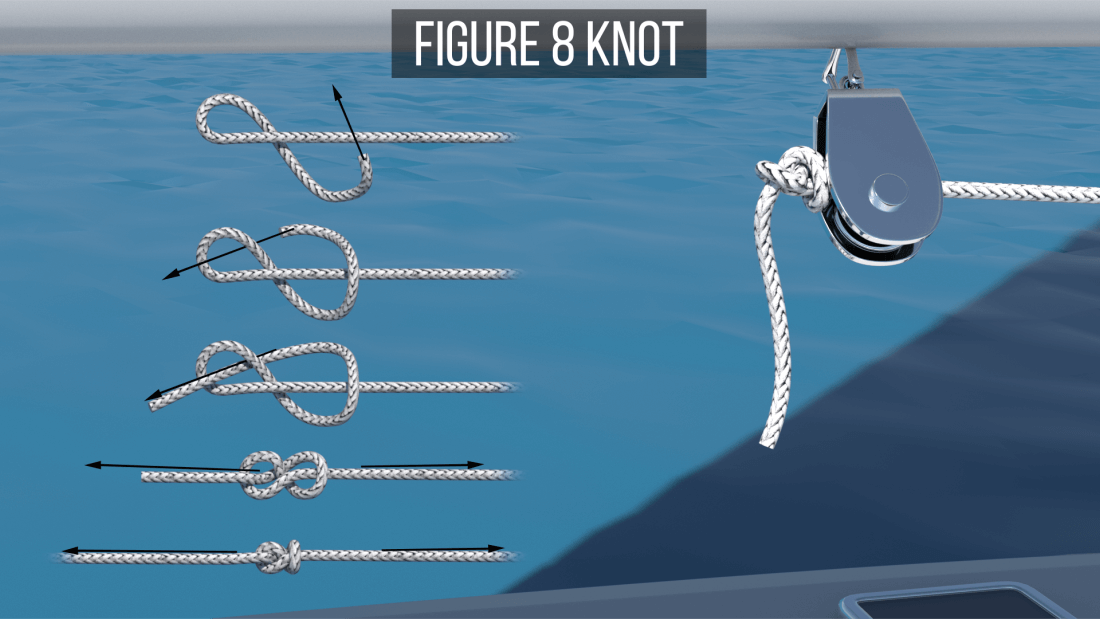
The Flemish bend, also known as a figure eight bend, a double figure eight bend, and a rewoven figure eight is a knot for joining two ropes of roughly similar size.
A loose figure-eight knot is tied in the end of one rope. The second rope is now threaded backwards parallel to the first rope. When properly dressed, the two strands do not cross each other.
Although fairly secure, it is susceptible to jamming. If tied, dressed and stressed properly it does not need "stopper" or "safety" knots.
Half hitches knot is useful for attaching a mooring line to a dock
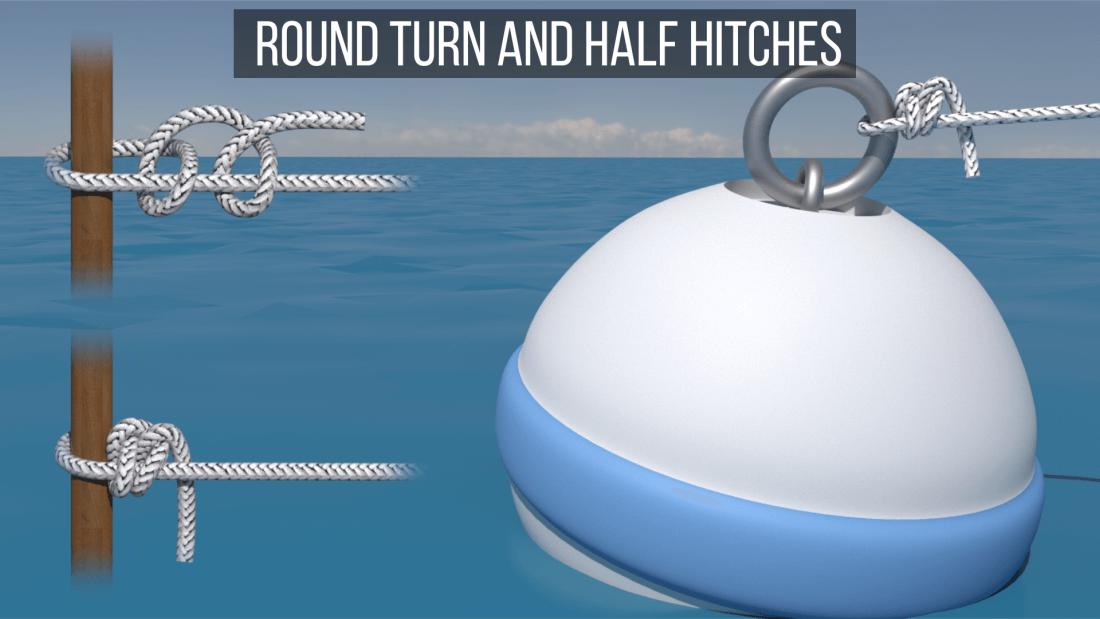
The Round Turn and Two Half Hitches is a strong and dependable knot commonly used in boating for securing a rope to a post, ring, or dock. It provides excellent holding power and is easy to adjust or untie, even after carrying a heavy load. This knot is ideal for mooring, anchoring, or tying boats to a dock, as it distributes strain evenly along the rope.
To tie it, begin by taking the rope and making a full turn (a round turn) around the object to create friction and absorb tension. Then, make two half hitches by looping the working end around the standing part of the rope twice, pulling each hitch snug.
The round turn prevents slipping, while the half hitches lock the rope securely in place. This combination makes it one of the most reliable and versatile knots for boating, camping, and general outdoor use.
Bowline knot
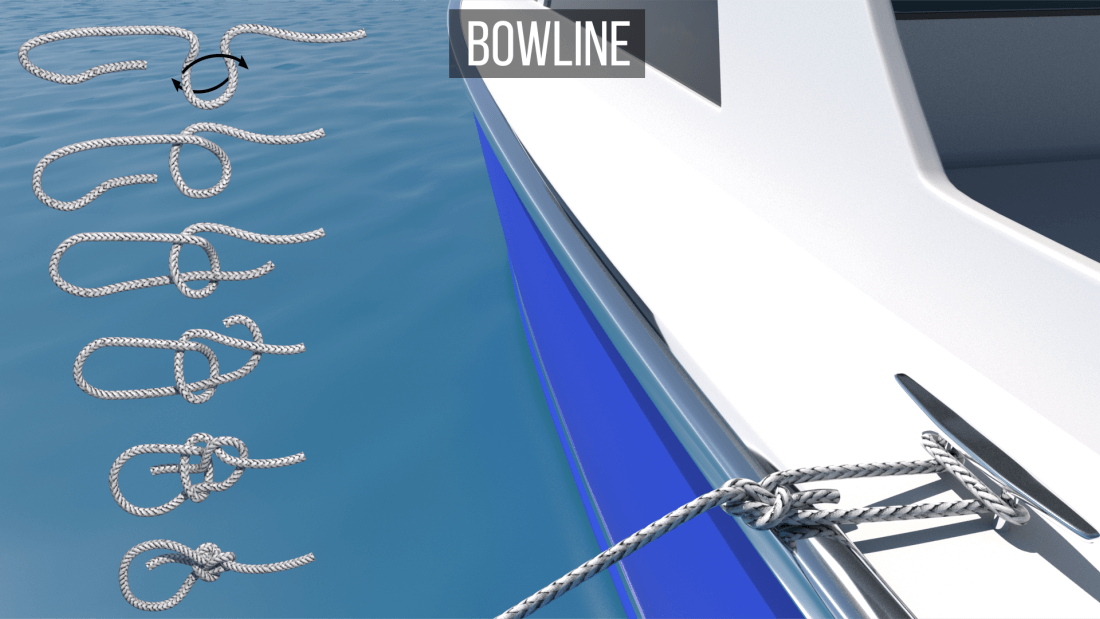
The Bowline makes a reasonably secure loop in the end of a piece of rope. It has many uses, e.g., to fasten a mooring line to a ring or a post. Under load, it does not slip or bind. With no load it can be untied easily.
Two bowlines can be linked together to join two ropes. Its principal shortcoming is that it cannot be tied, or untied, when there is a load on the standing end. It should therefore be avoided when, for example, a mooring line may have to be released under load.
The bowline is sometimes referred as King of the knots because of its importance. It is one of the four basic maritime knots
Reef knot
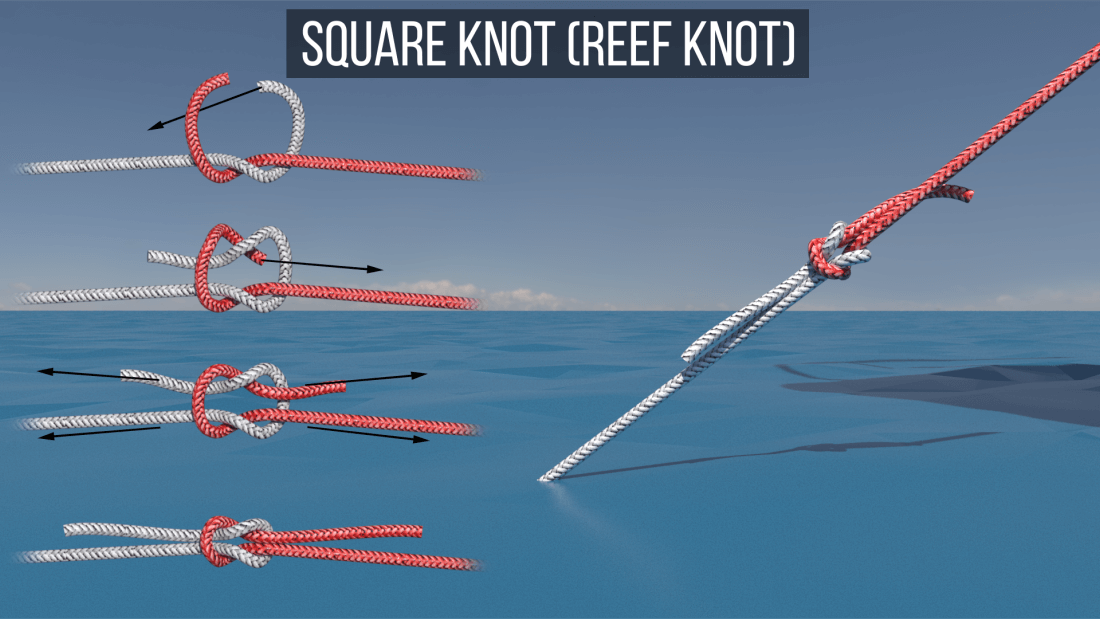
The reef knot, also known as the square knot, is a simple and traditional knot used to join two ropes of equal diameter or to secure a line around an object. It is widely used in boating, sailing, and first aid because it lies flat and is easy to tie and untie.
To tie a reef knot, take the right end of one rope over and under the left end, then take the left end over and under the right—remembered by the phrase “right over left, left over right.” When pulled tight, the knot forms a symmetrical and compact shape that holds securely under constant, even tension.
However, the reef knot should not be used for critical loads or ropes of different sizes, as it can slip or capsize under strain. It is best suited for tying bundles, securing sails, or fastening light objects where reliability and quick release are important.
Clove hitch knot
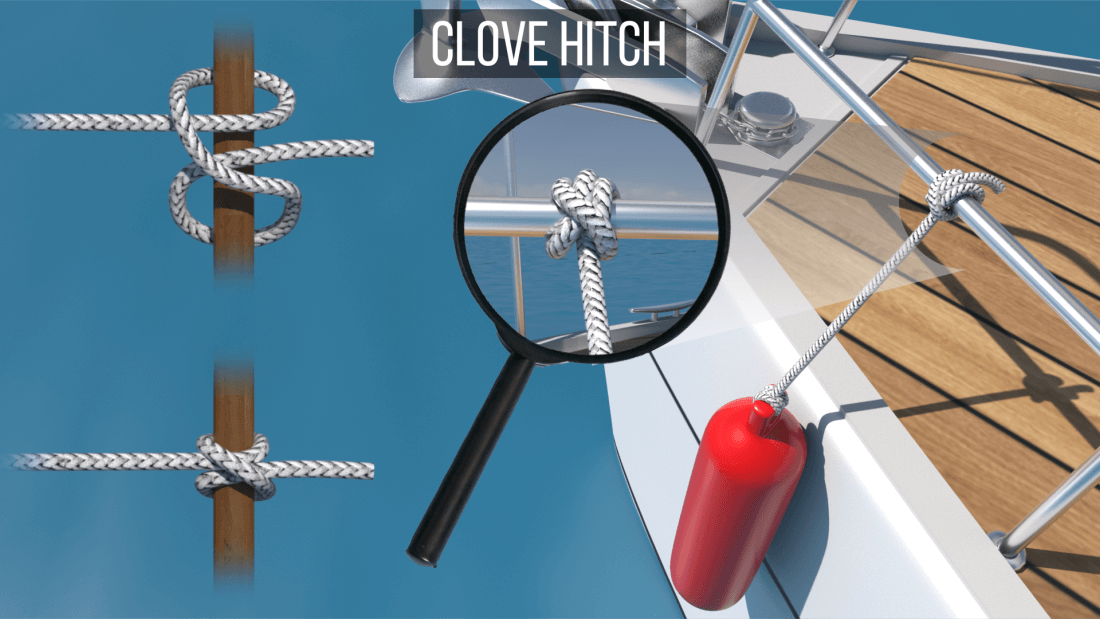
The clove hitch is a quick and practical knot used to secure a rope to a post, rail, or piling. It is especially common in boating for tying fenders, mooring lines, or temporary lashings. The knot is easy to tie and untie, even after being loaded, which makes it ideal for short-term or adjustable connections.
To tie a clove hitch, wrap the rope around the object once, crossing the working end over the standing part to form an “X.” Then make another turn around the object and tuck the end under the second wrap below the crossing. Pull tight to secure it.
The clove hitch grips firmly when under steady tension, but it can slip or loosen if the load changes direction. For greater security, it’s often finished with an extra half hitch. Its simplicity and speed make it one of the most useful knots for everyday boating tasks.
Cleat hitch
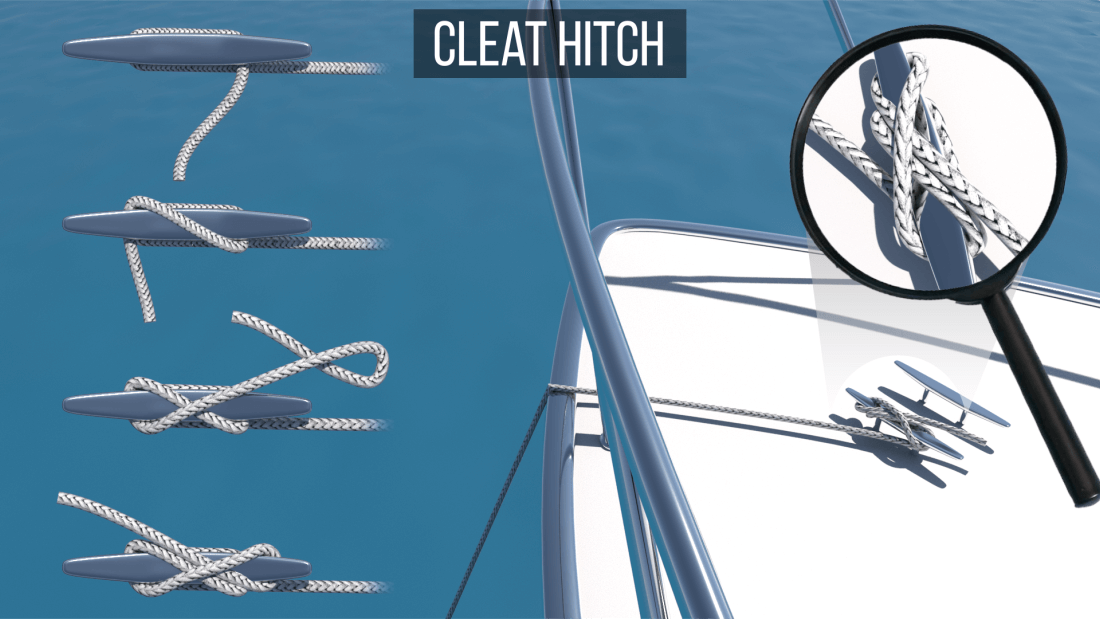
The cleat hitch is one of the most essential and commonly used knots in boating. It is primarily used to secure a boat to a dock or to tie off a line on a deck cleat. The cleat hitch is valued for its simplicity, strength, and reliability, holding fast under strain yet remaining easy to untie even after bearing heavy loads.
To tie a cleat hitch, start by taking the line around the base of the cleat once, which provides friction and holds the tension. Then, wrap the line over the top of the cleat in a figure-eight pattern, alternating from one horn to the other. Finish the hitch by making a locking turn, twisting the line and tucking it under the last loop.
When tied correctly, the cleat hitch keeps your boat secure and stable at the dock, resisting slipping or loosening even in rough water or shifting winds.
Every boater should practice these knots regularly, both on land and on the water. Mastering them ensures you can handle docking, towing, or emergency situations with confidence—an essential part of safe and responsible boating.